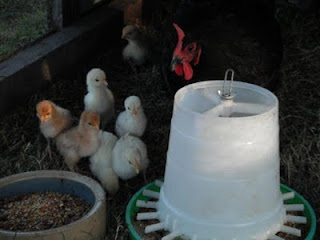So we have decided to be brave and we have purchased an Orchid. Mum decided to be generous and purchased us another. Now we have two reasons to be diligent in trying to keep the suckers alive. When I say two, we also have three other species in pots outside that have not come to much….YET!
Come on – they sort of thrive on neglect. We have one stunner hanging in a tree that we purchased with the house. The previous owners left the garden in a shamble so for this plant to survive – further highlights the fact that they can be neglected – with care.
Having hunted down many websites and having researched all of my gardening books I am going to write down a list – mainly as a reminder to me. I shall update this list as I research more or as our plants provide us with info rmation worth sharing.
Firstly, I am going to try to duplicate the plant's natural conditions as closely as possible. In nature, most orchids are epiphytes, meaning they grow on other objects, clinging to rough bark or even stone. The showy orchids favoured by most people are usually either phalaenopsis hybrids or dendrobium hybrids.
These plants thrive in these conditions:
· Strong light, but not direct late-afternoon sunlight (although dendrobiums can handle more sun)
· High humidity
· Turbulent air flow around the roots
· Regular periods of drying, alternating with drenching rains
Obviously the closer we can come to creating these conditions, the more success and better blooms we should have.
Most store-bought orchids come packaged in cheap plastic pots with the roots packed in soaked moss. Obviously, this violates two of the main rules of successful growth. There is no air flow around the roots, and the roots are never given a chance to completely dry out. Thus, the plant cannot breathe and root rot is inevitable. Orchid roots are highly specialised organs designed to soak up water very quickly and breathe. They do not extract nutrients from soil.
Repotting for Success
The first step with any store-bought orchid is to enjoy the bloom. Don't attempt to repot a flowering plant.
After the bloom is done, go ahead and cut off the dead flower spike with sterile snippers and repot the plant. Orchids should be potted into specialised orchid pots in orchid mixture. Orchid pots feature wide drainage slits so water will literally run through the pot. They are widely available. Orchid potting mixture is usually composed of several chunky ingredients, including pine bark, charcoal, and even styrofoam.
To repot your orchid, follow these steps:
1. Remove it from the plastic pot and carefully remove as much of the moss as you can. Healthy roots should be white and firm, with a small green growing point.
2. Cut away any shriveled, rotten or blackened roots.
3. Set the plant into the pot and fill in around it with potting mixture. The plant should be firmly situated, but it will not be completely anchored. Eventually, new roots will grow through the potting mixture and attach to the pot itself, thus anchoring your plant.
Once it's repotted, find a good spot. An east facing window with a few hours of mild morning sun is perfect. To provide the necessary humidity and catch run-off water, put the plant into a wide, deep tray and fill the tray with gravel.
Tips for Care
Caring for your orchid is pretty simple. During the summer months, water it weekly and heavily. Let the water drench the roots and fill up the pebble tray (this will provide extra humidity). It doesn't hurt every so often to even put the plant in the kitchen sink and really soak it down. Don't worry, you won't kill it as long as it's allowed to dry out afterward. During the growing season, feed it weekly with a weak solution of a powder or liquid fertiliser.
In the winter, keep your plant warm and cut the water back to once a month or so. Mist it every so often to make sure it stays hydrated. Don't fertilise it.
If you see signs of distress, such as yellowing leaves, wrinkled leaves or no blooms, move the plant and keep tweaking your conditions. Once an orchid finds a happy spot, and falls into a routine, the plant should regularly throw out new roots and leaves or canes (depending on the type) and reward you yearly with a beautiful bloom.
I have been told, by Jim from my local nursery, for some orchids to flower they need a ten degrees difference over the summer period. This may mean bringing them inside to the air conditioning for a couple of days.
What have we started?



















































